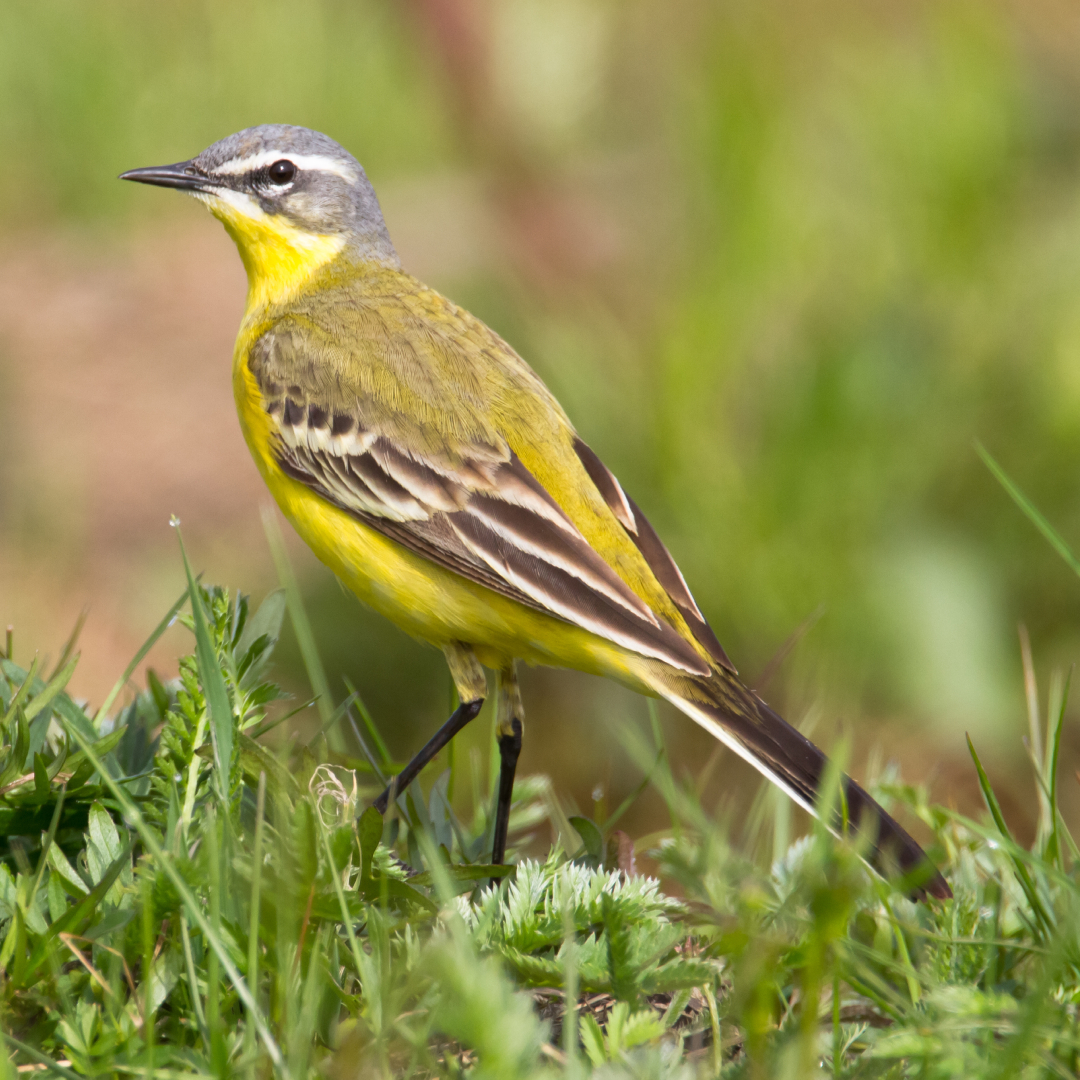
Alert Status:
Alert Status: Red -32% decrease ↓
Estimated number of UK breeding
Estimated number of breeding territories: 20,000 (2016)
Listen to Yellow Wagtail song:
Yellow wagtails have olive-green upperparts and heads with black and white wing and tail feathers. Their underparts are a striking yellow colour which contrasts sharply with the wing feathers. They have a yellow throat and bib with a clear yellow eyebrow (or supercilium). The males are slightly brighter than the females and this species has shorter tails than the other two wagtail species in the UK.
Average Length: 17 cm
Average Lifespan: 3 years.
Average Wingspan: 23-27 cm




Yellow wagtails primarily eat small invertebrates such as flies and beetles but will sometimes eat seeds. They can be seen chasing insects that are kicked up by cattle.
Yellow wagtails begin breeding in April, soon after they arrive. Their cup-shaped nest is built close to the ground in a shallow depression. A clutch of 5-6 eggs is laid in the nest and incubated by the female for 14 days. Once hatched the chicks are fed by both parents for 13-15 days before they leave the nest, but they will remain with the parents for some time after leaving. Some yellow wagtails will produce 2 broods before the breeding season ends in August.
Due to their chosen food and the association with farmland, the declines in this species are thought to be strongly linked with agricultural intensification. The increased use of pesticides has driven a decline in available invertebrate prey, and changes in soil and farmland quality have reduced nesting sites and food availability. The draining of wetland sites to be used for farmland and the loss of large grass fields have also driven declines in this species. Furthermore, climate-driven droughts and habitat degradation in their wintering grounds are driving declines in this migratory species.
Be careful not to accidentally disturb active nests as they are placed close to the ground.
If you own land consider grass or spring crops that can be utilised by this bird for nesting.
Avoid using harsh chemicals to remove insects from your garden or land.
Several different subspecies of yellow wagtail can be found in Europe, the one found in the UK is known as the yellow-crowned wagtail.
BirdLife International (2023) Species factsheet: Motacilla flava. Downloaded from http://datazone.birdlife.org/species/factsheet/western-yellow-wagtail-motacilla-flava. Accessed: 20/10/2023.
Bradbury, R. B., & Bradter, U. (2004). Habitat associations of Yellow Wagtails Motacilla flava flavissima on lowland wet grassland. Ibis, 146(2), 241–246. https://doi.org/10.1111/J.1474-919X.2003.00251.X
British Trust for Ornithology (2023) Yellow Wagtail | BTO - British trust for ornithology. Available at: https://www.bto.org/understanding-birds/birdfacts/yellow-wagtail. Accessed: 20/10/2023.
Gilroy, J. J. (2006). Breeding ecology and conservation of yellow wagtails Motacilla flava in intensive arable farmland. Bird Study, 59(4):1-11.
Gilroy, J. J., Anderson, G. Q. A., Grice, P. V, Vickery, J. A., Bray, I., Watts, P. N., & Sutherland, W. J. (2008). Could soil degradation contribute to farmland bird declines? Links between soil penetrability and the abundance of yellow wagtails Motacilla flava in arable fields. Biological Conservation, 141(12): 3116-3126 https://doi.org/10.1016/j.biocon.2008.09.019
Gilroy, J. J., Anderson, G. Q. A., Grice, P. V., Vickery, J. A., & Sutherland, W. J. (2010). Mid-season shifts in the habitat associations of Yellow Wagtails Motacilla flava breeding in arable farmland. Ibis, 152(1), 90–104. https://doi.org/10.1111/j.1474-919X.2009.00988.x
Gilroy, J. J., Anderson, G. Q. A., Grice, P. V., Vickery, J. A., Watts, P. N., & Sutherland, W. J. (2009). Foraging habitat selection, diet and nestling condition in Yellow Wagtails Motacilla flava breeding on arable farmland. Bird Study, 56(2), 221–232. https://doi.org/10.1080/00063650902792080